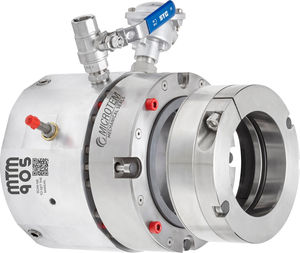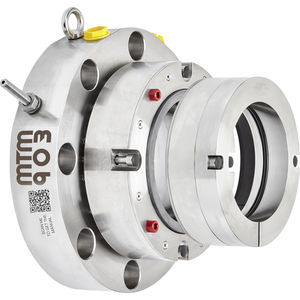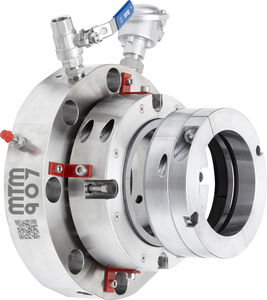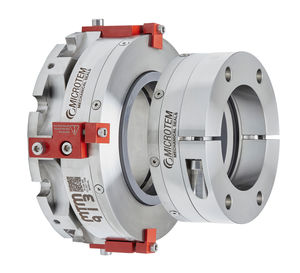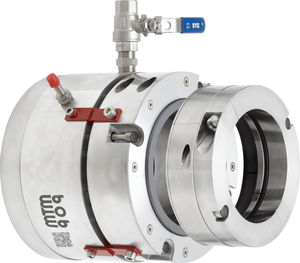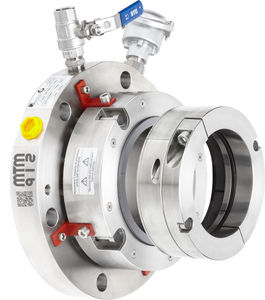
- Company
- Products
- Catalogs
- News & Trends
- Exhibitions
Rudder mechanical seal MTM900 Evofor propeller shaftsboat

Add to favorites
Compare this product
Characteristics
- Applications
- for propeller shafts, rudder
- Application domain
- boat
Description
The MTM900 propeller shaft seal was created to attack the market of small and medium-sized boats and since many years it has been the first choice of the main world Yachts shipyards. Simple, reliable, it is the product with the smallest axial dimensions on the market. Designed to be installed directly on the stern tube, it is produced by CNC machines and for this reason it has no customization limits. The stationary case can accommodate up to 6 radial holes (optional) that can be used to connect: an additional flush, a temperature sensor, a vibration sensor (triaxial), a pressure sensor or a dedicated vent line. The stationary part, made of techno polymer as standard, can be fixed to the tube by means of a series of grains or a clamp. The stationary ring can be supplied in graphite resin (G) or in antimony graphite (G1) and is provided monolithic or inserted in a 316 stainless steel case. The rotating ring is constrained to the propulsion axis with a series of grains ( up to diameter 100) or with a clamp (over diameter 100) and is available in 316, Duplex or Super Duplex stainless steel.
SHAFT DIAMETER: from 35 mm to 185 mm (available in inches)
CASE MATERIALS:
Techno polymer POM (TM)
Aluminum (AL)
Stainless steel 316 (J1)
FACES MATERIALS:
Resin carbon graphite (G)
Antimony carbon graphite (G1)
Resin carbon graphite insert (G2)
Antimony carbon graphite insert (G3)
Stainless steel 316 (J1)
Duplex (D)
Super Duplex (D1)
VIDEO
*Prices are pre-tax. They exclude delivery charges and customs duties and do not include additional charges for installation or activation options. Prices are indicative only and may vary by country, with changes to the cost of raw materials and exchange rates.





